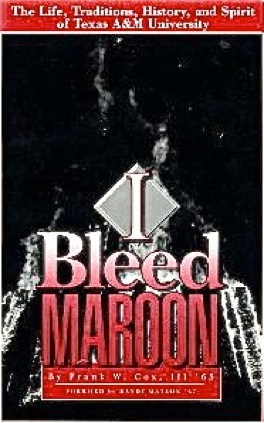Epilogue
AS AGGIE ROBERT EARL KEEN WOULD SAY, “THE ROAD GOES ON FOREVER”
Note: As was true in the original I Bleed Maroon, some of the following will be personal experiences which I include in hopes that they will rekindle some memories of Aggies during their days at Aggieland and since.
Enrollment at Texas A&M has grown to more than 50,000 and the campus has exploded with new buildings on both sides of the track. These improvements include a revamped Military Walk, The Young Men’s Christian Association (YMCA) Building, the Memorial Student Center (MSC), The Sam Houston Sanders Corps of Cadets Center and Museum, The Rec Center, Reed Arena and Olsen Field at Blue Bell Park. In addition, changes have begun on Kyle Field (100,000+ seating capacity). The new “On-campus Golf Course” at the main entrance to the campus is in full bloom and adds a needed beauty to the Southeast corner of campus. To say the least, Aggieland looks just a little different than it did when Hurricane Carla, my fish buddies and I hit the campus in 1961.
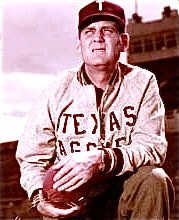
Rewards of a higher level were obtained by other Aggie athletes. Quarterback Stephen McGee received the Fellowship of Christian Athletes (FCA) National Male Athlete of the Year Award. Our Men’s Head Basketball Coach Billy Kennedy and Head Baseball Coach Mark Johnson received the FCA’s National Coach of the Year Award.
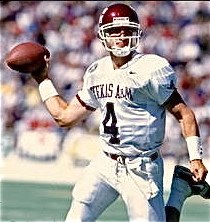
Aggies shocked the athletic world in 2012 as we entered into the South Eastern Conference (SEC). The SEC has proven to be the most dominant conference in the NCAA for years, and we are rejoicing to be an integral player and partner in this highly successful venture. We look forward to the many new friends that we will make and leave behind best wishes to all of our old friends and foes. Gig ‘Em Aggies!
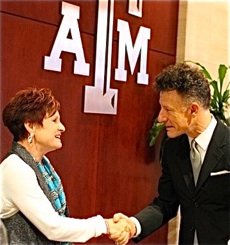
Of course we would be amiss to not mention that many Aggies have continued to hold up the long tradition of Texas Aggies serving our country in the military service. Since that infamous day of September 11, 2001 at least 30 Aggies have paid the ultimate price in the ongoing war against Islamic terrorism. In addition, countless others sustained life-long injuries. These Aggie men and women held the torch high; they hoisted the flag; they fired the volleys; they stood in the gap; they paid the price. They should be every Aggie’s Guide-On. We salute all of them and their families and commend them for protecting our freedom. Well done.
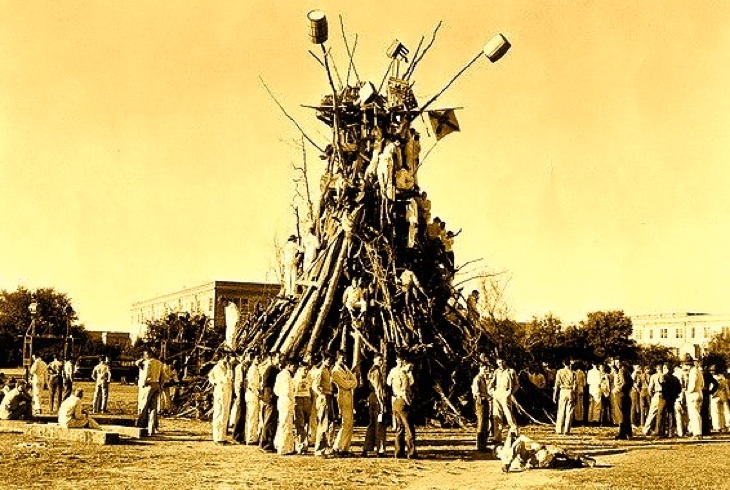
Aggies and the world will never forget the Bonfire tragedy of November 18, 1999. Twelve Aggies lost their lives and several others were injured. Our minds and hearts will forever be etched with memories of the 12, the Bonfire ceremonies and memorials for the 12, the spontaneous singing of “Amazing Grace,” the prayers offered and the varied gifts, including many Aggie Rings, which were left for our fallen fellow Aggies. The 12 gave their all and the 12th Man gave their best. They were all examples of what true Aggies are all about. Their stories are carved into the stone arches of Bonfire Memorial to be viewed by all in years to come. We will not forget.
As a result of the tragedy, administrators canceled the future building of Aggie Bonfire on campus. Yet, dedicated Aggies continue to build Bonfire off campus, thus rightly continuing this great Aggie tradition that is a symbol of the undying love and devotion that Aggies have for their school and its traditions. It is built with respect and love of those who have gone before. We applaud those who have taken a calculated risk and have worked on and developed methods that make the building and burning of Bonfires safer and better than ever. That’s what Aggies do—research the causes of a tragedy, eliminate the causes, develop better methods and complete the task with renewed effort and commitment. It’s the Aggie Way! America and Texas A&M were built on the determination and hard work of risk takers. Aggies are risk takers. May it forever be so!
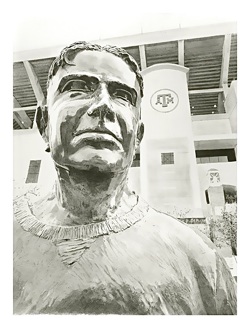
That is only one of the reasons why Bonfire means so much to all Aggies and another reason it must be continued. It would be fitting that each student should give at least four hours of their time to work on Bonfire each year. It is the least current Aggies can do. I strongly encourage all Aggies to participate in the building and the burning of Bonfire in order to experience the feeling of contributing to the bonding that takes place among all who participate in this unique effort and tradition. Bonfire has always united Aggies as does no other tradition in Aggieland. Build It. We Will Come!! Gig ‘Em Aggies!
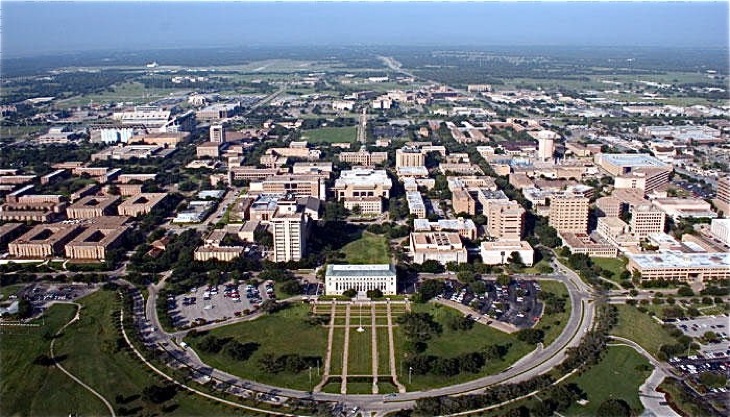
Cheryl and I left our hometown of New Boston and moved to Bryan/College Station in 2001. Cheryl works on campus in the newly renovated Memorial Student Center and is an Aggie Mom and encourager and mentor to many students and visitors to Texas A&M. She was selected by Aggie students to be a Namesake for Fish Camp in 2004 which is one of the most treasured honors that students bestow on another person. She is also an advisor for a girls’ Christian organization, Philadelphia Sisters. I am so proud of her for the life that she lives. Though she was unable to attend Texas A&M as a student, she is an Aggie through and through. We could only hope that all students at A&M were as active and devoted to the spirit and traditions of Aggieland as she. I am blessed to have had her as my wife for over four decades. Let’s just face it, Aggie men are blessed with great wives. I hope Aggie women feel the same about their husbands.
Since the initial writing of I Bleed Maroon, I was honored with being selected as the 1992 On Campus Aggie Muster Speaker. As a result, I have spoken at Aggie Musters every year since then which has given me the privilege of meeting many wonderful Aggies and their families throughout the nation. The 1992 Muster celebrated the 50th anniversary of the most celebrated Aggie Muster of all time, the Corregidor Muster, which put the knowledge of Aggie Muster on a national level. For it was in the early months of WWII on this small Pacific Ocean Island that U.S. troops had relentlessly been bombarded every second of every day, 24 hours a day every day by the Japanese military forces for weeks and weeks. On that 21st day of April, 1942, in the midst of heavy attack, those Aggies who remained met in fox-holes, behind barriers, in caves and wherever two of them could muster, and had a “Roll Call” for their fellow Aggies who had fallen in battle. A few days later, the island fell into the hands of the Japanese forces and all American soldiers were taken prisoner. They were then marched and transported to their eventual prison and slave labor camps. Many would not even survive the forced march.
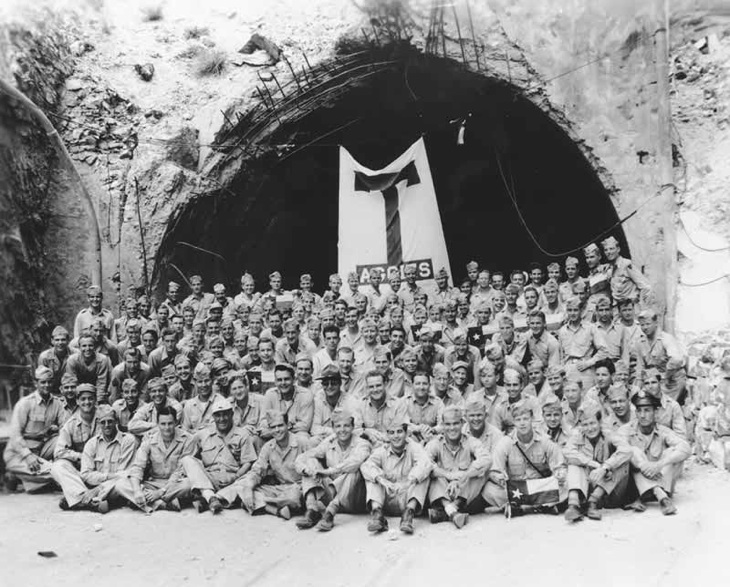
The Japanese were in desperate need of gold to fund their war effort. They would take any gold jewelry and even knock out the teeth of their prisoners who had gold fillings. Every day Mr. Hopmann would hide his gold Aggie ring in a secret pocket in his prison uniform. Every night for three and one half years, Mr. Hopmann would dig a hole at the foot of his dirt floor bed and place his Aggie ring in it and cover it up with dirt for fear that he would die or be killed by the Japanese guards. His testimony was, “They might get my watch, but they are not going to get my Aggie ring!” After Japan surrendered, Mr. Hopmann and his fellow prisoners were rescued from their captors by American troops.
He returned to America and became a successful farmer and mayor of his town, never complaining or even talking much about his ordeal during the War. Many of his family members had never heard his story until it was revealed at Aggie Muster in 1992, fifty years after his capture. He was the honored guest and only living Aggie survivor of Corregidor who was present in Reed Arena that Muster Day. All of us who were in attendance that day were honored to be in the presence of a true Aggie hero. We thank you Mr. Hopmann.
My family became trusted friends with Urban C. Hopmann and his family. We visited them often during his last years. Mr. Hopmann spoke freely with us about his days as a prisoner of war. Mr. Hopmann told us the reason for his survival during his POW days. He credited His Lord and Savior Jesus Christ as his mainstay and was also emboldened by what he had learned during his days at Texas A&M in the Cadet Corps. Just a few short years after our first encounter with Mr. Hopmann, my family had the privilege of attending and I had the privilege of speaking at his funeral and relaying the heroic life to all present of this true American and great Texas Aggie. Praise the Lord for Aggies such as Urban Hopmann’39—a real man, a real American, a real Texas Aggie.
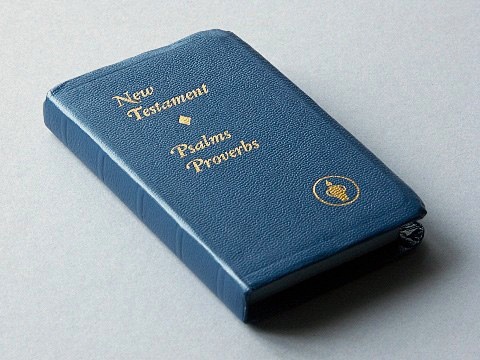
In addition, he, without praise or plaque, was the main initiator and developer with me for both the Shelby Metcalf Plaza at Reed Arena and more recently for the Flag Display on the exterior of the south side of the MSC. It was with much effort and work that the nine flags (the U.S. Flag, the Texas State Flag, the Texas A&M Flag and the flags of the U.S. Army, U.S. Navy, U.S Marines, U.S. Air Force, U.S. Coast Guard and the U.S. Merchant Marine) were approved for flying over the hallowed grounds of the Memorial Student Center. What better place could there be to display the flags than over the MSC which honors all the many Aggies who have given the ultimate sacrifice in the defense of freedom in all wars since 1876? Thank you Travis and Pat for your dedication to God, America, Texas A&M and Aggie Baseball!!
Yes, we Aggies do bleed maroon and we “have a spirit that can ne’er be told.” Yet, as the years rapidly pass, I realize more and more that rather than Texas A&M, our top focus and priority should be on our devotion to our Heavenly Father and His Son. To be truthful, we must admit that all of the great attributes and traditions of Texas A&M and Texas Aggies are ultimately a result of the influence of God Himself upon our school, traditions and spirit in much the same way as He influenced America and her dream of a government “of the people, by the people and for the people.”
enough






